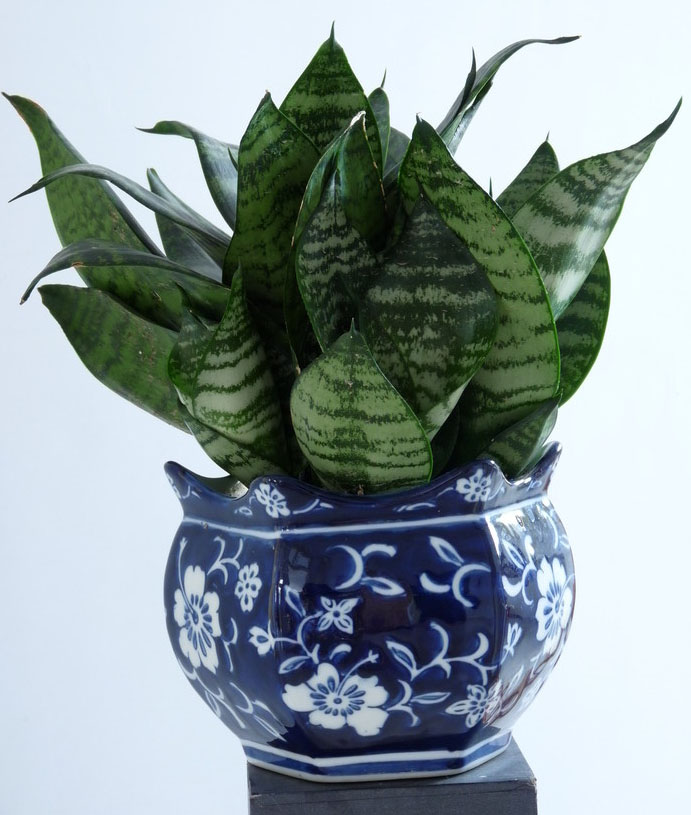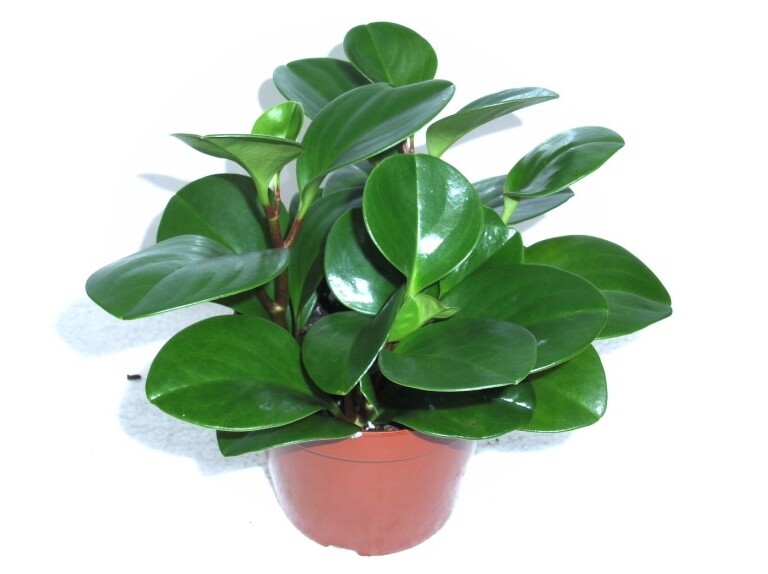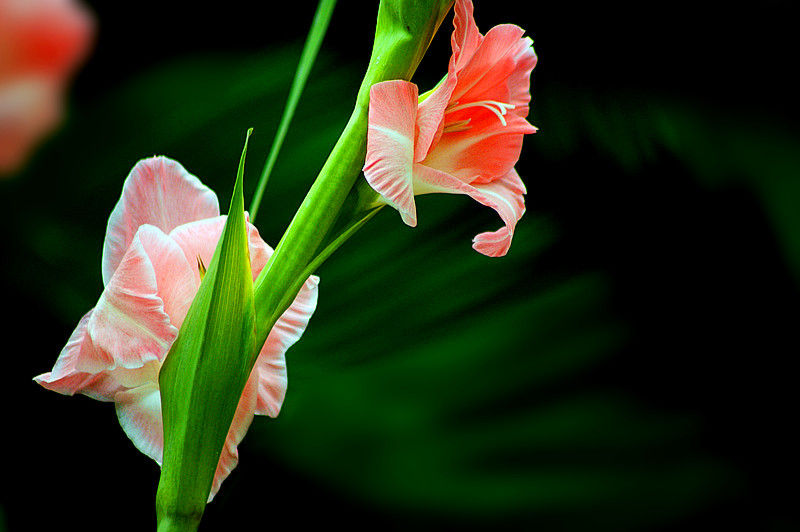The role of Tiger Pilan how to cultivate Tiger Pilan
Tiger tail orchid, also known as brocade orchid, tiger skin orchid, belongs to Liliaceae, perennial herbaceous foliage plant, rhizome. Leaves clustered, fleshy linear-lanceolate, hard leathery, erect, base slightly furrowed; dark green, with horizontal stripes of light green and dark green on both sides, slightly powdered. Raceme, white to light green flowers, sweet, flowering for spring and summer. Tiger tail orchid leaves firm and erect, posture resolute, strange and interesting; it has many varieties, plant shape and leaf color changes greatly, exquisite and chic; strong ability to adapt to the environment, is a kind of indomitable plant. Suitable for decorating study, living room and office space for a long time to enjoy. Put the tiger tail orchid in the home, in addition to playing an ornamental role, but also can absorb formaldehyde and other harmful substances in the house, reducing its harm to the family. Especially after newly decorated houses or newly purchased furniture, the effect is more obvious. Next, the editor of the network will introduce to you the role of Tiger Pilan.

The role of Tiger Pilan how to cultivate Tiger Pilan
Tiger tail orchid originated in western Africa, resistant to drought, like warm sunshine, but also resistant to shade, avoid waterlogging, and grow healthily in sandy loam with good drainage. The growth rate is fast in spring and summer, so we should pour more organic liquid fertilizer, and it is better to keep the basin soil slightly dry in late autumn and winter. Not resistant to severe cold, enter the house in late autumn and early winter, as long as the indoor temperature is above 18 ℃, the normal growth is not dormant in winter, flowering from January to February, no less than 10 ℃ can survive the winter safely. During the growing period, no matter indoor or outdoor maintenance, it is not suitable to put it in the shade and strong sunlight for a long time, otherwise, the yellow edge will narrow and fade. During the growing period, the growing point of the flag leaf curls and closes, showing dark brown, and stretches during the dormant period. Beginners often think that it is dry tip and cut off. When the apical growth point is destroyed, the growth terminates.
The adult tiger tail orchid can blossom every year and has fragrance, but it is mainly foliage. This kind of plant is drought-resistant, moisture-resistant, shade-tolerant, can adapt to a variety of harsh environment, suitable for garden beautification or potted plants, and is an advanced indoor plant.
Key points of cultivation
[planting]: this plant has strong adaptability and extensive management. 3 parts of fertile garden soil and 1 part of cinder can be used in pot cultivation, and then a small amount of bean cake crumbs or poultry dung can be added as base fertilizer.
[fertilization]: it should not be excessive. In the peak growth period, fertilizer can be applied once or twice a month, and the amount of fertilizer should be less. If only nitrogen fertilizer is applied for a long time, the markings on the leaves will become dim, so compound fertilizer is generally used. You can also bury 3 holes of cooked soybeans evenly in the soil at the edge of the basin, each hole is 7-10 grains, be careful not to come into contact with the root. Fertilization was stopped from November to March of the following year.
[light]: potted tiger-tail orchids should not be in the dark for a long time, and should always be given scattered light, otherwise, the leaves will be dark and lack vitality. But do not suddenly move to the sun, should first adapt to the dark light.
[growth habits]: strong adaptability, warm and humid sex, drought tolerance, light tolerance and shade tolerance. The requirement of soil is not strict, and the sandy loam with good drainage is the best. The suitable temperature for growth is 20-30 ℃, and the overwintering temperature is 10 ℃. Tiger skin orchid can be propagated by ramet and cutting.
[reproduction]: the methods of ramet and cuttage can be used for the reproduction of Phellodendron.
[soil]: lax requirements on the soil, can grow normally in a very small soil volume, like loose sandy soil and humus, resistant to drought and barren. The growth is so strong that it does not inhibit its growth even if it is full of pots. Generally, the basin is changed once every two years and carried out in spring. Standard compost can be used when changing the basin.
[temperature]: like the warm temperature. The suitable temperature is 18-27 ℃, and the growth stops when the temperature is below 13 ℃. The winter temperature should not be lower than 10 ℃ for a long time, otherwise the base of the plant would rot and the whole plant would die.
[watering]: be moderate and not too wet. Tiger tail orchid is a desert plant, which can withstand harsh environment and prolonged drought conditions.
If the leaves are watered too often, the leaves will turn white and the color of the markings will become lighter. The growth is exuberant from spring to autumn, it should be fully watered. During the dormant period in winter, watering should be controlled, the soil should be kept dry, and watering should be avoided into leaf clusters. When using plastic pots or other decorative flowerpots with poor drainage, avoid stagnant water, so as not to cause decay and fold down the leaves.
1, ramet: suitable for all varieties of tiger skin orchid, generally combined with changing pots in spring, the method is to cut the overgrown leaves into several clumps, each with leaves, but also a section of rhizome and sucking buds, which can be planted in the pot respectively.
2. Cutting: it is only suitable for varieties with no golden edge or silver vein, otherwise the yellow and white markings on the leaves will disappear and become a common species of tiger skin orchid. The method is to select strong and substantial leaves, cut them into 5-6 cm long, insert them into sand or vermiculite, expose half of the soil surface, maintain a little moisture, and take root in about a month.
3. Note: the seedlings of Phnom Penh and variegated leaf varieties are green seedlings, and Phnom Penh and spotted mausoleum disappear, which reduces the ornamental value, so these varieties should not be propagated by leaf cutting, but can only be propagated by ramets.
[cultivation]: in pot cultivation, rotten leaf soil and garden soil can be mixed in the same amount and a small amount of mature base fertilizer can be added as substrate. It grows well under the condition of sufficient light, except in midsummer to avoid direct sunlight, other seasons should accept more sunlight; if placed in the indoor light is too dark for a long time, the leaves will be dark, lack of vitality.
In addition, if it is placed indoors for a long time, it is not advisable to suddenly move directly to the sun. It is better to move to the light first, so that it can have an adaptation process and then see the sun, so that the leaves will not be burned. Watering should be appropriate and master the principle that it would rather be dry than wet. Usually scrub the foliar dust with clean water to keep the leaves clean and bright. When sprouting new plants at the root neck in spring, the basin soil should be properly watered to keep the basin soil moist; in summer high temperature season, the basin soil should always be kept moist; the amount of watering should be controlled after the end of autumn, and the basin soil should be kept relatively dry to enhance cold resistance.
It does not have high requirements for fertilizer, and rarefied liquid fertilizer is applied once or twice a month in the growing season to ensure that the leaves are green and thick.
Introduction to the culture of Phnom Penh tiger skin orchid (tiger tail orchid) the growth habit and function of Phnom Penh tiger skin orchid
Tiger tail orchid is a kind of flower with high ornamental value, and it is also one of the most common species of tiger orchid. It is often used to decorate offices, living rooms, studies and courtyards. Phnom Penh Tiger Pilan is a kind of foliage plant which can purify indoor environment. It can absorb indoor harmful gases, purify the air, and play a certain role in helping human health. So, do you know the growth habits and culture methods of Phnom Penh tiger skin orchid as well as its function? Today, the editor will give you a detailed introduction.
Growth habit
Phnom Penh tiger skin orchid has strong adaptability, warm and humid sex, drought resistance, light and shade tolerance. The requirement of soil is not strict, and the sandy loam with better drainage is better. The suitable temperature for growth is 20-30 ℃, and the overwintering temperature is 10 ℃. It has a strong ability to adapt to the environment, is a kind of indomitable plant, widely cultivated and used, and is a common potted foliage plant at home. It is suitable for decorating study, living room and office for a long time.
The culture method of tiger skin orchid in Phnom Penh
In pot cultivation, rotten leaf soil and garden soil can be mixed in the same amount and a small amount of mature base fertilizer can be used as substrate. Tiger skin orchid grows well under the condition of sufficient light, except in midsummer to avoid direct sunlight, other seasons should receive more sunlight; if placed in the indoor light is too dark for too long, the leaves will be dark and lack vitality. In addition, if placed indoors for a long time, tiger skin orchid should not be suddenly moved directly to the sun, it should be moved in the light first, so that it can have an adaptation process to see the sun again, so that the tiger skin orchid leaves will not be burned. Tiger skin orchid should be watered in the right amount and grasp the principle that it would rather be dry than wet. Usually scrub the foliar dust with clean water to keep the leaves clean and bright.
When sprouting new plants at the root neck in spring, the basin soil should be kept moist, and the amount of water should be controlled after the end of autumn, and the basin soil should be kept relatively dry to enhance the cold resistance. Tiger Pilan does not have high requirements for fertilizer. Dilute liquid fertilizer is applied 1-2 times a month in the growing season to ensure that the leaves are green and thick.
Tiger skin orchid has strong adaptability, warm and humid sex, drought resistance, light and shade tolerance. The requirement of soil is not strict, and the sandy loam with better drainage is better. The suitable temperature for growth is 20-30 ℃, and the overwintering temperature is 10 ℃.
Phnom Penh tiger skin orchid effect
Phnom Penh Tiger Pilan is a kind of foliage plant which can purify indoor environment. NASA scientists have found that Phnom Penh Tiger Pilan can release oxygen while absorbing carbon dioxide, increasing the concentration of negative ions in the indoor air. When there is a TV or computer in the room, the negative ions that are very beneficial to the human body will be rapidly reduced, while the stomata on the succulent stem of Phnom Penh Tiger Pilan close during the day and open at night to release negative ions. In the room of 15 square meters, 2-3 pots of Phnom Penh tiger skin orchid are placed, which can absorb more than 80% of the harmful gases in the room.
That's all I know about Tiger Pilan today. I hope it will be helpful for flower friends to read this article. If you want to know more about Tiger Pilan, please continue to pay attention to the succulent flower bed, we will provide you with more related knowledge!
The function of tiger skin orchid what is the function of tiger tail orchid? What are the benefits? How do you raise it?
Tiger tail orchid (scientific name: Sansevieria trifasciata Prain), also known as tiger orchid, brocade orchid, thousand-year-old orchid, tiger tail palm, yellow tail orchid or mother-in-law tongue, is a perennial herb foliage plant of the genus Liliaceae. Its remarkable function makes it a good appreciation plant for home and office, so what are the benefits of tiger tail orchid?
Its remarkable functions are:
1. Purify the air
The study shows that tiger tail orchid can absorb some harmful gases in the room, and can effectively remove harmful substances such as sulfur dioxide, chlorine, ether, ethylene, carbon monoxide, nitrogen peroxide and so on. Put the tiger tail orchid at home, in addition to play an ornamental role, but also release oxygen at night (other plants absorb oxygen at night) sufficient oxygen during sleep will improve the quality of sleep, so tiger skin orchid is very beneficial to the human body. Especially after newly decorated houses or newly purchased furniture, the effect is more obvious.
two。 Medicinal effect
Chemical composition: contains abamasogenin.
Nature: "Lu Chuan Materia Medica": "cool, sour taste."
Functional indications: heat-clearing and detoxification. Treat colds, bronchitis, falls, sores.
① "Lu Chuan Materia Medica": "detoxification, anti-inflammation. Treat falls, sores, snakebites. "
② "Guangxi Chinese Herbal Medicine": "clearing away heat and detoxification, removing saprophytic muscle." Treat colds and coughs, bronchitis, injuries caused by falls, carbuncle swelling and poisonous snakebites. "
Cultivation techniques of Cymbidium
One: light. Potted tiger tail orchid does not require high light, as long as there is relatively enough light. Tiger tail orchid grows well under sufficient light, except in midsummer to avoid direct sunlight, other seasons should receive more sunlight; if placed in the indoor light is too dark for too long, the leaves will be dark, lack of vitality.
Two: soil. Tiger tail orchid has strong adaptability, lax requirements for soil, extensive management, likes loose sandy soil and humus, and is resistant to drought and barren. The basin is usually changed once every two years and carried out in spring.
Three: temperature. Cymbidium has strong adaptability, the suitable temperature for growth is 20-30 ℃, and the overwintering temperature is 10 ℃. The winter temperature should not be lower than 10 ℃ for a long time, otherwise the base of the plant would rot and the whole plant would die.
Four: moisture. Watering should be appropriate and master the principle that it would rather be dry than wet. Usually scrub the foliar dust with clean water to keep the leaves clean and bright. When sprouting new plants at the root neck in spring, the basin soil should be properly watered to keep the basin soil moist; in summer high temperature season, the basin soil should always be kept moist; the amount of watering should be controlled after the end of autumn, and the basin soil should be kept relatively dry to enhance cold resistance. During the dormant period in winter, watering should be controlled, the soil should be kept dry, and watering should be avoided into leaf clusters. To avoid stagnant water, so as not to cause decay and make the leaves below the collapse.
Five: fertilizing. Tiger tail orchid does not have high requirements for fertilizer. If only nitrogen fertilizer is applied for a long time, the markings on the leaves will become dim, so compound fertilizer is generally used. Fertilization should not be excessive. In the peak growth period, fertilizer can be applied 1-2 times a month, and the amount of fertilizer should be less. Standard compost can be used when changing pots, and dilute liquid fertilizer is applied 1-2 times a month in the growing season to ensure that the leaves are green and thick. Fertilization was stopped from November to March of the following year.
Before I mastered the management and cultivation techniques, I felt that I could not act in too much haste. If there was a real problem, then I would spend it in a symptomatic manner. Step by step, the tiger-tail orchid itself is also highly adaptable to the environment.
- Prev

Culture methods and matters needing attention of Green Leaf Jasper
Douban green is a perennial evergreen herb of the genus Piperaceae. Native to the West Indies, Panama, northern South America, and later introduced into China, it is generally used as a potted plant decoration and is widely welcomed for its bright luster and natural green. And the plant can also be used medicinally, according to the pharmacology of traditional Chinese medicine.
- Next

The culture method of how to raise sword orchid
Gladiolus, alias: ten brocade, sword orchid, calamus orchid, water chestnut lotus, Latin name: VaniotHoutt, Iridaceae, Gladiolus perennial herbs. The bulb is oblate and spherical, and its original species comes from the Cape of good Hope in South Africa. It has been crossed many times, and its cultivated varieties are widely distributed all over the world. The flower stem is higher than the leaf.
Related
- Fuxing push coffee new agricultural production and marketing class: lack of small-scale processing plants
- Jujube rice field leisure farm deep ploughing Yilan for five years to create a space for organic food and play
- Nongyu Farm-A trial of organic papaya for brave women with advanced technology
- Four points for attention in the prevention and control of diseases and insect pests of edible fungi
- How to add nutrient solution to Edible Fungi
- Is there any good way to control edible fungus mites?
- Open Inoculation Technology of Edible Fungi
- Is there any clever way to use fertilizer for edible fungus in winter?
- What agents are used to kill the pathogens of edible fungi in the mushroom shed?
- Rapid drying of Edible Fungi

